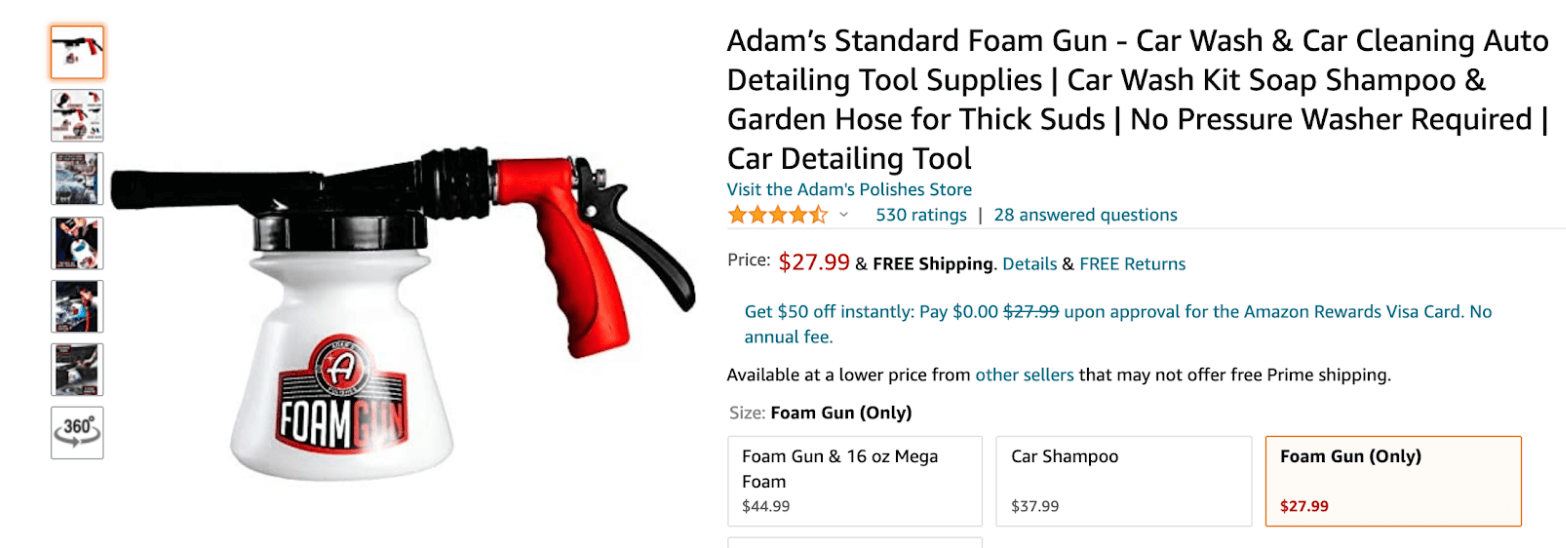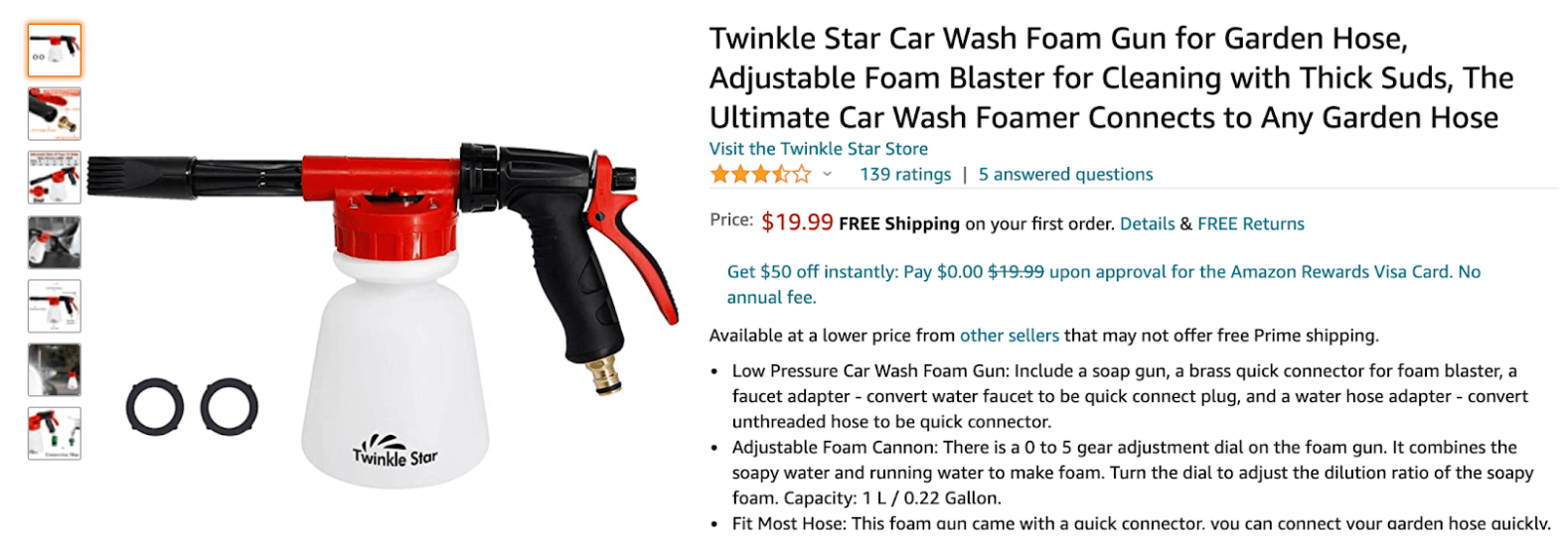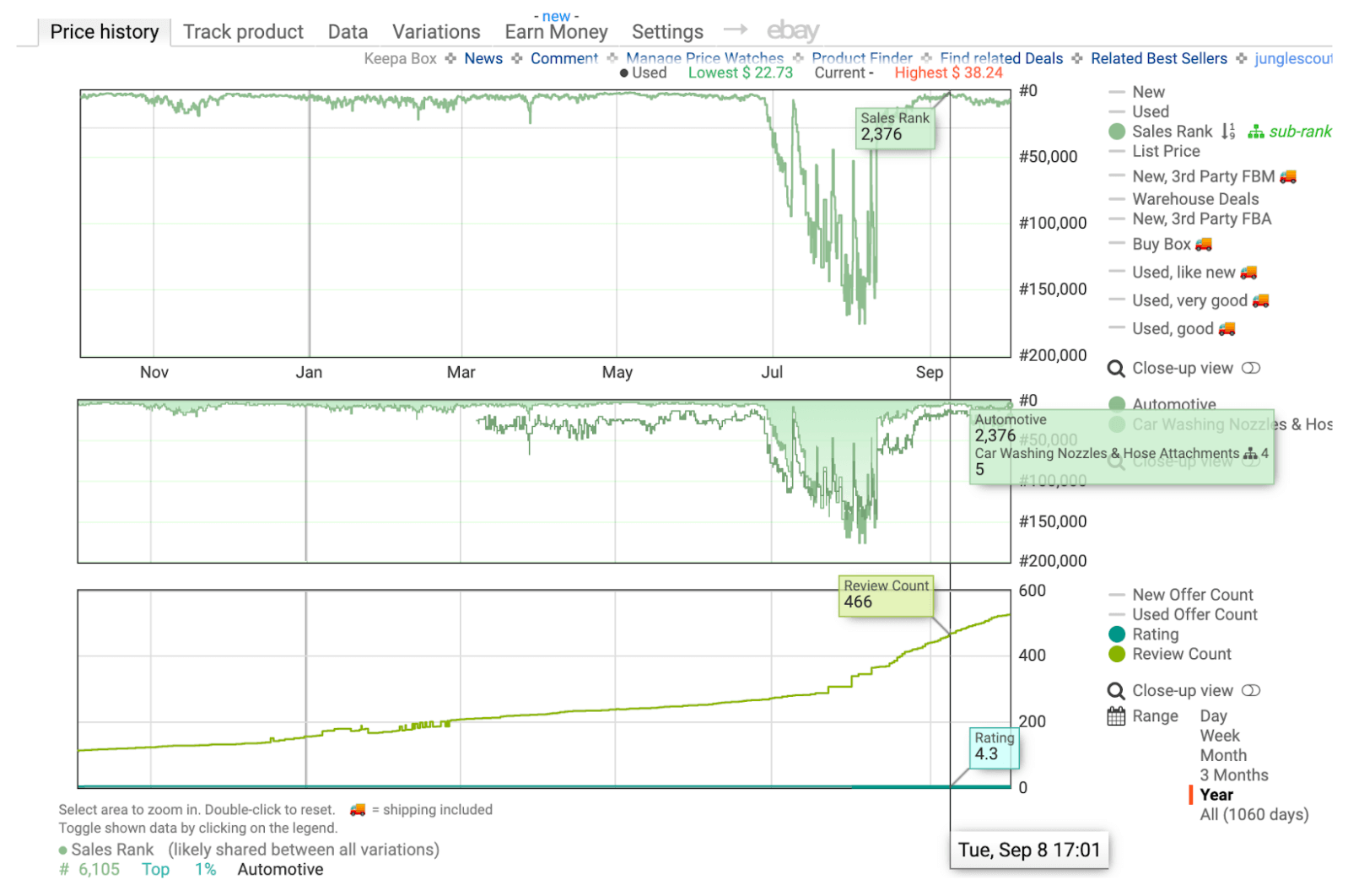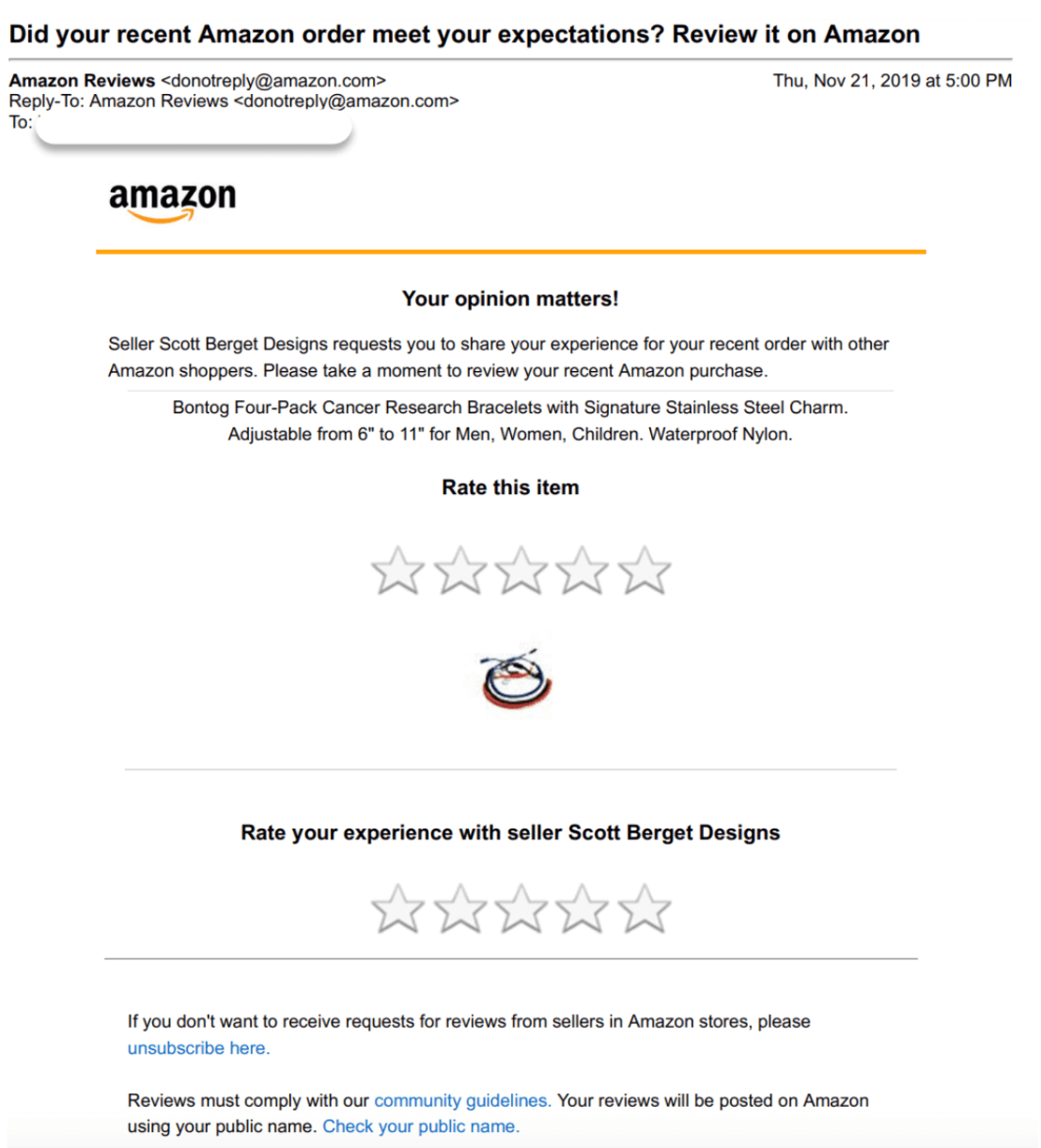case study

The Importance of Product Reviews on Amazon: A/B Test Results Don’t Lie
Spoiler alert: reviews are incredibly important to a product’s success. Online — and on Amazon in particular — reviews are critical to providing the real-life validation for a product’s quality, performance, and likeness to its photos that shoppers rely on to decide about making a purchase.
In fact, 5% of U.S. consumers said that, when shopping online, they’re looking for the product with the best ratings and reviews.
Reviews, specifically positive reviews, help drive customer behavior by providing social proof that your product is worth purchasing. Potential customers want reassurance of a product’s quality in lieu of physically inspecting or testing it before buying.
Increasing reviews is also a leading indicator of increased Best Seller Rank (BSR), which helps your product appear in more Amazon search results and earn more clicks to your listing. And the more reviews you have on your listing, the better chance you have at converting a visitor into a buyer.
Your overall Amazon selling strategy is also dependent on having reviews. If you were to just focus on, say, your PPC strategy to drive traffic to your listing, that traffic alone might not convert into sales if your listing has few (or no) reviews.
To see real examples of how product listings compare (or if all of the above has not yet convinced you of the importance of reviews), we’ll dive into Amazon product data to explore:
- How the quantity and quality of reviews affects sales performance
- How to get more reviews on your listings
- How to automate review requests and set your Amazon business up for success.
Comparing listings with good and bad reviews
When shopping for products on Amazon, reviews make all the difference between what you purchase and what you skip over. As a customer, you’re not only looking for a highly rated product, you’re also noting the number of reviews a product has. You may not completely trust a product that has only 10 reviews, while a competing listing with 100 reviews may look more compelling.
Let’s compare a few products to see the power that the quantity of reviews has on product listings.
Adjustable Trailer Hitch Mount
In this example, I’m comparing options for adjustable trailer hitch mounts. For a product like this, I want to be sure what I’m buying is 100% safe and reliable. Since I can’t inspect the hitch mounts in person before I buy one, I’m relying on reviews from previous customers to steer me in the right direction. For simplicity’s sake, let’s call these hitch mounts by the first words in their product names, CURT and HITOWFGM — shortened to HITO.
CURT:

HITO:

After reading through both listings, I can see that these trailer hitches are practically identical, and both have the specs I’m looking for—they fit a 2” receiver, they’re rated for similar weight capacities, both feature a tri-ball mount, and they generally look the same.
My next step before deciding between the two is to take a look at the reviews. While HITO has a slightly higher rating, CURT has a higher review count, meaning more people have tested the mount and found it satisfactory.
Based on the review counts alone, I personally would choose CURT — even though it’s slightly more expensive. The higher review count gives me greater assurance that my trailer won’t fall off while I’m towing it down the highway.
Obviously, it doesn’t matter what I think about a product’s performance—I have to look at the data to see how each of these products actually performs.
First, I’ll use Jungle Scout Extension to get an estimate of the monthly sales based on the current best seller rank (BSR).
CURT:

HITO:

Based on this data, we can clearly see that the CURT mount sells roughly six times more product per month, even though it is priced higher than the HITO mount. Of course, this is based on each product’s current rank only, and not their historical average monthly sales ranks. We now want to know whether CURT has sold better than HITO over time, or if it’s a recent change.
The best way to figure out if either of these products sell consistently at those sales ranks is to use a tool like Keepa. Keepa shows historical sales rank, price, and even review data.
Update:
The Extension will now display a Historical Trend data chart on a product detail page above the images. Sellers can view historical data points such as Buy Box price, historical sales rank, New lowest price, BSR, Amazon’s price, and more.

Another way to view a product’s historical data is to use a tool like Keepa. Keepa shows historical sales rank, price, and even review data.
CURT:

For the CURT mount, if we look at the green line in the graph, we can see that its sales rank has been fairly consistent for the past 3 months in the Automotive category. In general, the graph bounces around between 25,000 and 75,000. The only times we see large spikes in sales rank number is when Amazon is out of stock of the product (the orange indicates that Amazon itself sells the product, and has stock). Remember: the lower the sales rank number, the better. So CURT was performing much better on August 1 than it was around July 20.

Keepa also shows us the product’s average price and average sales rank. In this case, the average 90-day sales rank for the CURT mount is 30,807. This equates to roughly 120 sales a month according to the free Jungle Scout Sales Estimator.
HITO:

If we look at the 90-day average sales rank for HITO, it is 155,544. This equates to only 30 sales per month.
As you can see, price is not the only deciding factor when purchasing products on Amazon. The review count has a massive impact on the conversion rate of your listing. This is why it’s so important to do everything you can to get as many reviews as possible. We’ll show you how to do that shortly. For now, let’s check out another example of how the quantity of product reviews affect sales.
Car Wash Spray Gun
For this example, we’ll compare two different car wash foam guns. This is another case in which we need to pay close attention to reviews before making a purchase, because the function and quality of the product is very important—our cars’ paint is on the line, after all.


Both of these listings look good in terms of images and listing information, and both products seem to function in the same way. Let’s say we’re unfamiliar with either of these brands; in that case, we want to look at two things: the number of reviews and the overall star rating for each.
With just a quick glance at the overall review count and rating, Adam’s Foam Gun seems to be the better choice even though it is priced higher. If we’re looking for a more budget friendly foam gun, it seems like the Twinkle Star Foam Gun is still a good option.
As in the previous example, let’s look at what the data tells us.
Adam’s:

Twinkle Star:

In viewing the Jungle Scout Extension data, we can see that Adam’s Foam Gun is the clear winner of the two. It has hundreds more reviews, a higher rating, and a stronger ranking.
I’m curious to see if the Twinkle Star Foam Gun’s lower rating has impacted sales over time. Let’s take a look at the Keepa charts to find out.
Adam’s:

The Keepa chart for Adam’s Foam Gun shows that its sales rank has stayed very consistent throughout the past year (except when it went out of stock) and its review count (bottom graph) has been steadily increasing, indicating that customers are very pleased with this product.
Twinkle Star:

As we look at the Keepa charts for the Twinkle Star Foam Gun, we can tell a lot about the history of the product. We can see that on July 12, this product had a 4.4 rating and a sales rank of 5,556. But if you look closely at the sales rank line, you can see it begins to dip around that time.

On September 14, the Twinkle Star Foam Gun’s overall review rating dipped to 3.6; its sales rank had jumped to 34,734. As the review rating went down, sales began to decrease.

Still with me? Let’s try a slightly different example, for good measure.
Baby Milestone Blanket
Now, instead of comparing two similar products with different review counts, we’ll focus on one product’s steady increase in sales as its review count ticked up.

This baby milestone blanket occupies a highly competitive niche, so reviews play a big role in which products sell and which ones don’t.
For this example, we are also going to look at the Keepa chart to check sales rank, but we’ll pay attention to the review count graph as well.

The top graph shows the sales rank and price history, while the bottom graph shows the review history. You’ll notice that as this product’s review count increased, the sales rank improved dramatically.

In this image, you can see that at a sales rank of 361,397 in early October, the listing had only one review.

As the review count went up, so did the sales rank. Once this product got over the 10-review mark, its sales really began to rise. Keep in mind that many other factors influence sales, such as price, product quality, and even how aggressively the seller utilizes sponsored ads. But this graph clearly shows that the review count had a lot to do with this listing’s conversions.
How to get more product reviews on your Amazon listing
Getting reviews on a brand new Amazon listing is difficult, and over the years Amazon has made it even tougher as it continues to update its review policy. Amazon has also been cracking down on fraudulent product reviews and review manipulation, which can impact the total.
In the early days of selling on Amazon, you used to be able to give away products at a steep discount in exchange for a review. Now, you cannot do that. You can still launch new products through promotions and giveaways, but you can no longer require customers to leave a review.
And in Amazon’s review policy, it specifically mentions that you cannot ask a family member or an employee to purchase your product and leave a review. So don’t even think about that.
So…how are you supposed to get reviews for your Amazon product?
Check out our full guide on how to get reviews on Amazon for an in-depth strategy.
It details some of Amazon’s own review programs, such as the Early Reviewer Program and Amazon Vine Program, in which Amazon offers a customer a gift card credit or free product in exchange for a review. (So, to be clear, Amazon can incentivize the customer on your behalf, but you cannot do it directly.)
Amazon also added a ‘Request a Review’ button for each order in Seller Central that, when clicked, sends an email to the customer asking them to leave a review.

Automate your review process using Jungle Scout
1. Send review requests in bulk
You can now request reviews for your Amazon orders in bulk using the Jungle Scout Extension, which helps sellers find and validate product ideas while browsing Amazon.
The “Request a Review” button goes beyond Amazon’s by searching for all of your eligible orders and sending up to 100 Amazon-approved review request emails to your customers at a time.

Instead of clicking into each individual order in seller central, the Jungle Scout button allows you to request product reviews in bulk from the orders page. This is extremely useful particularly for large-volume sellers.
2. Automate all review request emails so you never miss an order
Jungle Scout’s Review Automation feature is a new in-app tool that automatically requests product reviews for eligible products on an ongoing basis. In other words: set it and forget it!
Top Feature Benefits:
- Automatically send review requests for all eligible orders—or adjust to your preferences
- Easily view and analyze review request status with an organized table view and historical trend graph
- Save yourself time and tedium while maximizing your review request potential
Ready to get more reviews for your Amazon listings?
As we’ve learned, product reviews, especially the number of reviews, are critical to your success on Amazon. With Jungle Scout’s new Review Automation feature, you can improve the chances of increasing your review count, and in turn boost your conversions and sales.

Instead of clicking into each individual order in seller central, the Jungle Scout button allows you to request product reviews in bulk from the orders page. This is extremely useful particularly for large-volume sellers.

Brian Connolly
Brian is a writer and entrepreneur with over 6 years of experience in e-commerce and selling on Amazon.







